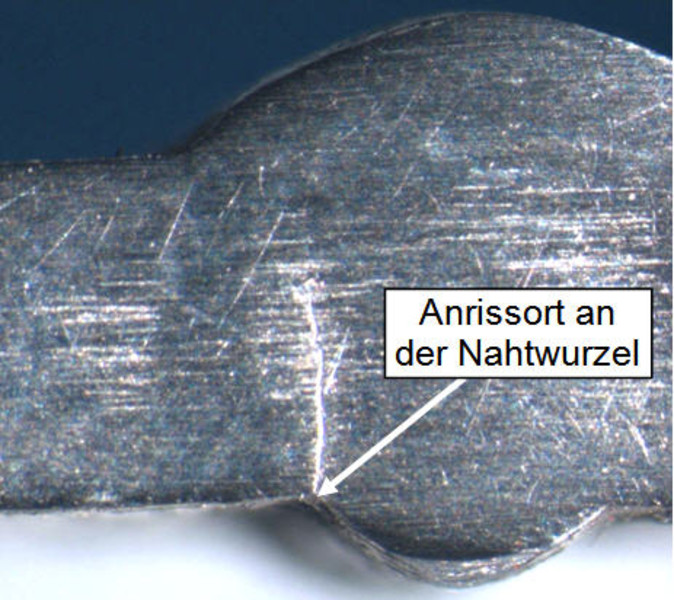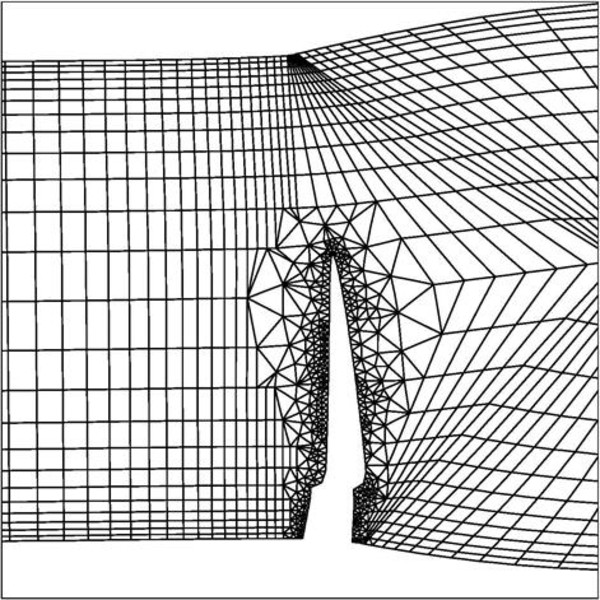
Crack growth concept
From scribe to crack through the
The Crack Propagation Concept (CPC) assumes that crack initiation has already taken place in the component. In this fracture mechanics approach, crack shape and crack size are assumed to be known and the lifetime until crack initiation is usually not considered. In contrast to the concepts described above, not the crack but the crack growth up to a critical crack length is examined here, where a residual fracture occurs due to the weakening of the cross-section.
Since the stresses at the crack tip can assume very high, theoretically infinitely large values, local stresses and strains are unsuitable as characteristic stress variables. Instead, the stress intensity factor K, which is dependent on the crack length and the stress level, is used in linear-elastic fracture mechanics (LEBM) with negligible small plastic zones at the crack tip. Large plastic crack tip stresses can be detected by elastic-plastic fracture mechanics (EPBM).

The main field of application in steel constructionis less the replacement of stress-based fatigue calculation than the evaluation of cracks and crack-like imperfections. In particular, the crack propagation concept can be used to estimate the remaining service life in order to define the necessary inspection intervals or material toughness to avoid brittle fractures.
How to crack propagation concept



Copyright © 2025
SKI Ingenieurges. mbH
Mengendamm 12
30177 Hannover
Phone: +49 (0) 511 / 261847-0

